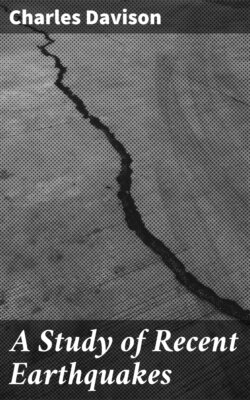Читать книгу A Study of Recent Earthquakes - Charles Davison - Страница 11
На сайте Литреса книга снята с продажи.
THE NEAPOLITAN EARTHQUAKE OF DECEMBER 16TH, 1857.
ОглавлениеHalf a century ago, seismology was in its infancy. On the Continent, Alexis Perrey of Dijon was compiling his earthquake catalogues with unfailing enthusiasm and industry. In 1846, Robert Mallet applied the laws of wave-motion in solids, as they were then known, to the phenomena of earthquakes; and his memoir on the Dynamics of Earthquakes[3] may be regarded as the foundation-stone of the new science. During the next twelve years he contributed his well-known Reports to the British Association,[4] and prepared a series of instructions for the observation and study of earthquake-shocks.[5] The latter, it is worth noting, contains an outline, but hardly more than an outline, of the methods of investigation which he developed and employed eight years afterwards in studying the Neapolitan earthquake.
The history of Mallet's preparation for his great work is somewhat strange. No one else at that time possessed so full a knowledge of earthquake phenomena. It was, however, a knowledge that had little, if any, foundation in actual experience; for, when he was awakened by the British earthquake of November 9th, 1852, he failed to recognise its seismic character. Although this shock disturbed an area of about 75,000 square miles and was felt in all four parts of the kingdom, the paucity of observations and the absence of durable records combined in preventing the successful application of his new modes of study.[6] Nevertheless, with confidence unshaken in their power, he awaited the occurrence of a more violent shock, but five years had to pass before his opportunity came towards the close of 1857.
So destructive was the Neapolitan earthquake of this year (Mallet ranks it third among European earthquakes in extent and severity), that nearly a week elapsed before any news of it reached the outer world. Without further loss of time, he applied for and obtained a grant of money from the Council of the Royal Society, and proceeded early in the following February to what was then the kingdom of Naples. Armed with letters of authority to different officials, he visited the chief towns and villages in the meizoseismal area; and, in spite of unfavourable weather and the difficulties of travelling in a country so recently devastated, he completed his examination in little more than two months. It was a task, surely, that would have baffled any but the most enthusiastic investigator or one unspurred by the feeling that he possessed the key to one of the most obscure of Nature's problems.
Mallet's confidence in the accuracy of his methods was almost unbounded. His great report was published four years later; but he seems to have regarded it almost as a text-book of "observational seismology" and the results of his Neapolitan work as mere illustrations. His successors, however, have transposed the order of importance, and rank his two large volumes as the model, if not the inspirer, of many of our more recent earthquake monographs.
Fig. 2.—Isoseismal Lines of the Neapolitan Earthquake of 1857. (Mallet.)ToList
